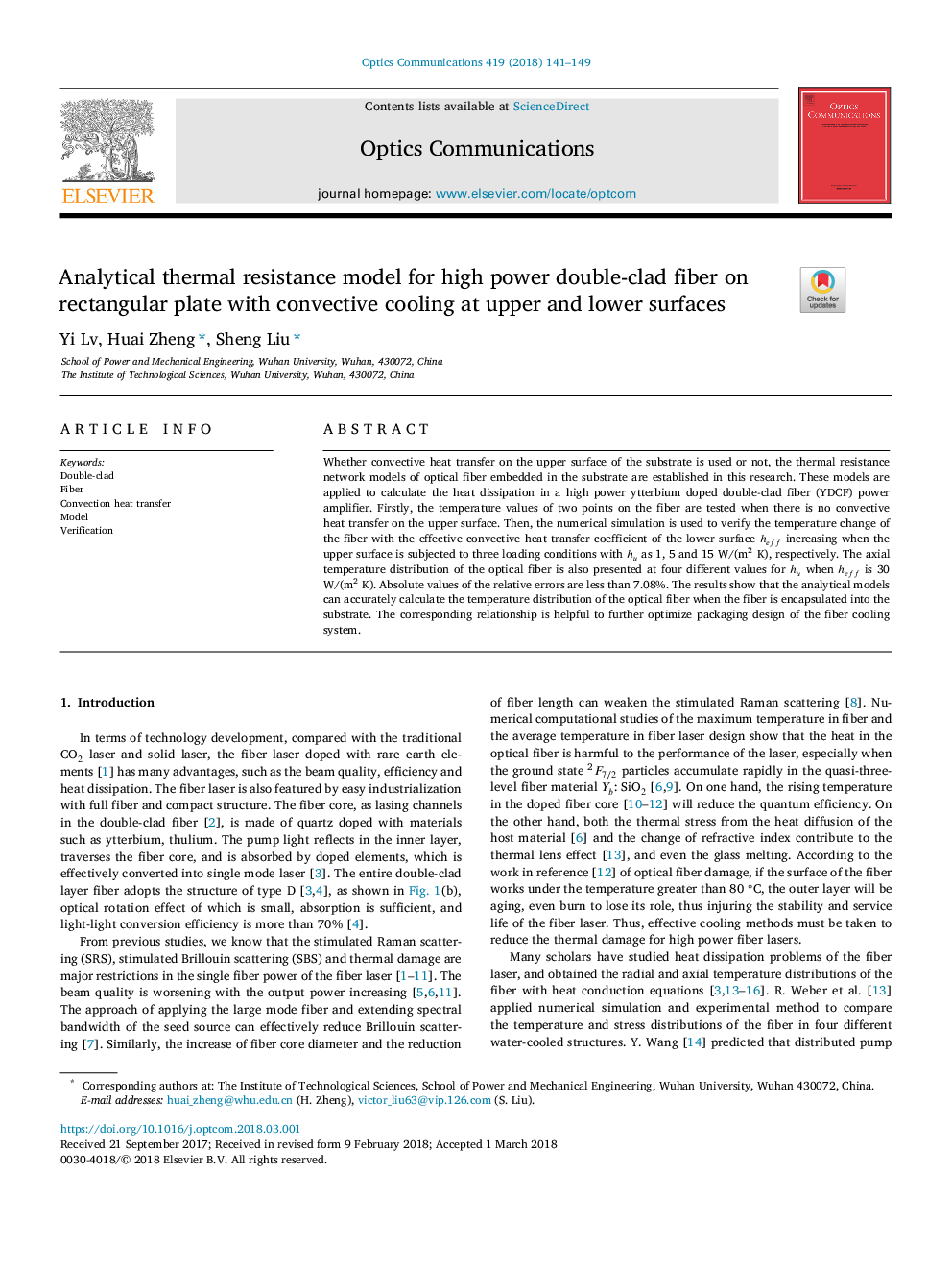| Article ID | Journal | Published Year | Pages | File Type |
|---|---|---|---|---|
| 7925278 | Optics Communications | 2018 | 9 Pages |
Abstract
Whether convective heat transfer on the upper surface of the substrate is used or not, the thermal resistance network models of optical fiber embedded in the substrate are established in this research. These models are applied to calculate the heat dissipation in a high power ytterbium doped double-clad fiber (YDCF) power amplifier. Firstly, the temperature values of two points on the fiber are tested when there is no convective heat transfer on the upper surface. Then, the numerical simulation is used to verify the temperature change of the fiber with the effective convective heat transfer coefficient of the lower surface heff increasing when the upper surface is subjected to three loading conditions with hu as 1, 5 and 15 W/(m2 K), respectively. The axial temperature distribution of the optical fiber is also presented at four different values for hu when heff is 30 W/(m2 K). Absolute values of the relative errors are less than 7.08%. The results show that the analytical models can accurately calculate the temperature distribution of the optical fiber when the fiber is encapsulated into the substrate. The corresponding relationship is helpful to further optimize packaging design of the fiber cooling system.
Related Topics
Physical Sciences and Engineering
Materials Science
Electronic, Optical and Magnetic Materials
Authors
Yi Lv, Huai Zheng, Sheng Liu,
